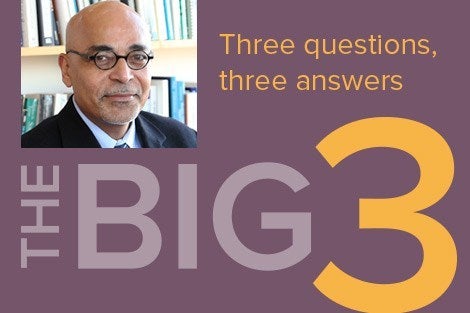July 8, 2020—K. “Vish” Viswanath is Lee Kum Kee Professor of Health Communication in the Department of Social and Behavioral Sciences at Harvard T.H. Chan School of Public Health and director of the India Research Center.
Currently, there are more than 700,000 cases of COVID-19 in India and there has been a big surge over the past month. How would you characterize the country’s pandemic response?
India was one of the earliest countries to declare a lockdown and that certainly gave them some time and opportunity to slow the spread. But you can’t keep a billion people home for months and bring the economy to a complete halt. People need income. So, they began slowly easing restrictions in May. But now the disease is spreading very fast.
They have been scaling up testing, but that alone is not sufficient. You need contact tracing, isolation and treatment for those who may have been infected. Contact tracing has been very difficult, because you need to have good records to reach people.
Overall, I think they have been doing the right things. But it is inadequate given the size of the country. How do they scale up these efforts? Unfortunately, there is no easy answer.
In terms of health communication, there have been a number of good efforts from the Ministry of Health at the national level, and by state health departments, media, and organizations. Our India Research Center has also been providing information, including a series of webinars. But we are not sure how successful these efforts are.
It is challenging, especially since the science of COVID-19 is evolving weekly. This leaves a lot of room for myths and misinformation—for example, that malaria medication, or even garlic can protect you. But there hasn’t been any widespread resistance to wearing masks, such as we’ve seen in the United States.
What are some of the unique challenges that the country faces in controlling the pandemic?
The number one challenge is density. It’s one of the densest countries in the world. Not just in the street—where you’re in a compressed area and people press against each other—but in the way that housing is structured. It is not unusual for more than one family, families with multiple generations, to live together. This makes it very difficult to follow physical distancing mandates.
Healthcare is another challenge. Those who are well-off can access advanced, solid care. But in general, the health infrastructure, including public health, is inadequate. They try to do what they can, but it is not big enough. I worry about the high rates of comorbid conditions, including diabetes and heart disease, that are contributing to COVID-19 spikes. We are seeing this especially in urban areas.
The sheer scale of the country and size of the population makes uniform execution of mitigation measures difficult.
What are your biggest concerns right now?
Hospital capacity, especially in rural areas. Do they have enough beds and equipment, such as ventilators? Do frontline health workers have personal protection equipment and are they falling sick or suffering from burnout?
Equity is a very big concern, not only in terms of prevention. When we do get a vaccine, it is possible that India will be involved in manufacturing and distributing it. But will it be available to everyone within the country?
Another big question I have is around opening up the economy. What roles do the private, public, and civic sectors play, and how can their efforts complement each other? Bringing them all together will require real leadership.
